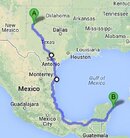lindenbruce
Contributor
The DTO's are everywhere. But the closer you are to the US/Mexico border the more dangerous it is. But no place is totally safe wherever you go even here in the states. It is a matter of being smart with your choices of where to go and when to go, being aware of your surroundings, and not getting off the beaten path. Stay in well lit areas at night and stay with crowds. Even Cozumel had a DTO related homicide at one of their resorts about four or five years ago. If you see a lot of federal Police officers with M16's you are prolly going to be safe. But if all you see are the local police officers or none at all, you really need to get out of that area. Because the DTO's will have a strangle hold on those areas. B.






